I have just started reading The Golden Spruce by John Vaillant on recommendation from my colleague. The first section of chapter one resonated particularly well in describing the space where the north pacific coast meets the pacific rainforest. Having trundled through forests such as this on my last trip to Cape Scott, this passage is incredibly vivid and beautifully accurate.
On the Northwest Coast, there is no graceful interval between the ocean and the trees; the forest simply takes over where the tide wrack ends, erupting full-blown from the shallow, bouldered earth. The boundary between the two is unstable, and the sea will heave stones, logs and even itself into the woods at every opportunity. In return, the roots of shore pine and spruce grope for a purchase on rocks better suited to limpets and barnacles while densely needled boughs cast shadows over colonies of starfish and sea anemones. The air is at once rank and loamy with the competing smells of rotting seaweed and decaying wood. From the beach you can see as far as height and horizon will allow, but turn inland and you will find yourself blinking in a darkened room, pupils dilating to fill the claustrophobic void.
A coastal forest can be an awesome place to behold: huge, holy, and eternal-feeling, like a branched and needled Notre Dame, but for a stranger it is not a particularly comfortable place to be. You can be twenty paces from a road or a beach and become totally disoriented; once inside, there is no future and no past, only the sodden, twilit now. Underfoot is a leg-breaking tangle of roots and branches and, every fifty feet or so, your way is blocked by moss-covered walls of fallen trees that may be taller than you and hundreds of feet long. These so-called nurse logs will, in turn, have colonnades of younger trees growing out of them, fifty years old and as orderly as pickets. In here, boundaries between life and death, between one species and the next, blur and blend: everything is being used as a launching pad by something else; everyone wants a piece of the sky. Down below, the undergrowth is thick, and between this and the trees, it is hard to see very far; the sound of moving water is constant, and the ground is as soft and spongy as a sofa with shot springs. You have the feeling that if you stop for too long, you will simply be grown over and absorbed by the slow and ancient riot of growth going on all around you.
Below find some additional pictures from my recent trip to Cape Scott courtesy of my good friend Matt.
-
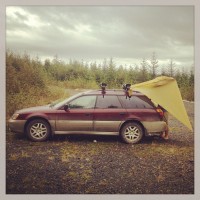
-
Suburu-tarp hybrid for the first nights’ sleep
-
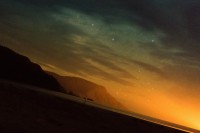
-
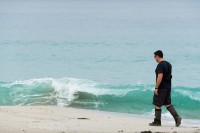
-
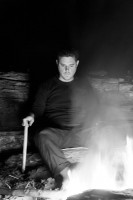
-
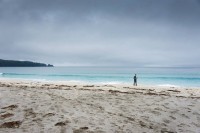
-
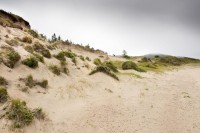
-
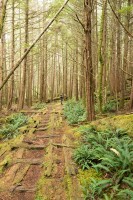
-
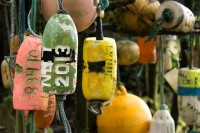
-
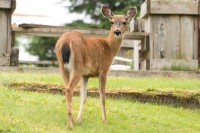
-
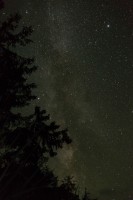
-

-
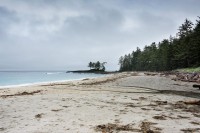
-

-
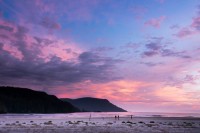
-
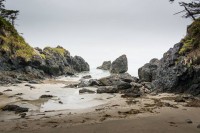
-
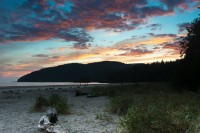
-
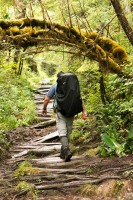
-

-
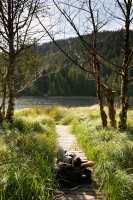
-
Chilling at Eric Lake
-
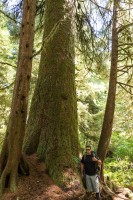
-
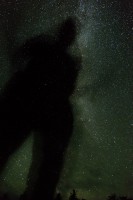
-
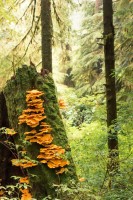
-

-
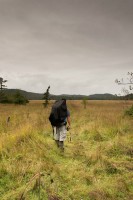
-

-

-
Pacific bioluminescence captured at San Josef Bay
-
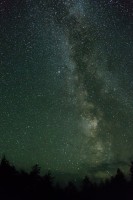
50.779024-128.424683
Like this:
Like Loading...
Michael Paskevicius
Share post:
I have just started reading The Golden Spruce by John Vaillant on recommendation from my colleague. The first section of chapter one resonated particularly well in describing the space where the north pacific coast meets the pacific rainforest. Having trundled through forests such as this on my last trip to Cape Scott, this passage is incredibly vivid and beautifully accurate.
Below find some additional pictures from my recent trip to Cape Scott courtesy of my good friend Matt.
Share this:
Like this:
Crest Mountain Hike
I arrived at the Crest Mountain trailhead at noon. The trail is well established and meanders through switchbacks up to the ridge. You gain just over 1100 metres to meet. read more…
Share this:
Like this:
Continue Reading
Three Nights in Marble Meadows
I have been wanting to return to Marble Meadows for some time. The only time I had visited previously was during the Golden Hinde Traverse when we came out through. read more…
Share this:
Like this:
Continue Reading
Nootka Island Trail Maintenance Trip
The Nootka trail is a remote and rugged 40km through hike on Nootka Island. We accessed the trail via water taxi from Tahsis, starting from Yuqout with a pickup at. read more…
Share this:
Like this:
Continue Reading
Climbing Mount Baker
For years, I have looked east from Vancouver Island, across the channel, towards the state of Washington to the imposing peak of Mount Kulshan. Also known as Mount Baker, this. read more…
Share this:
Like this:
Continue Reading